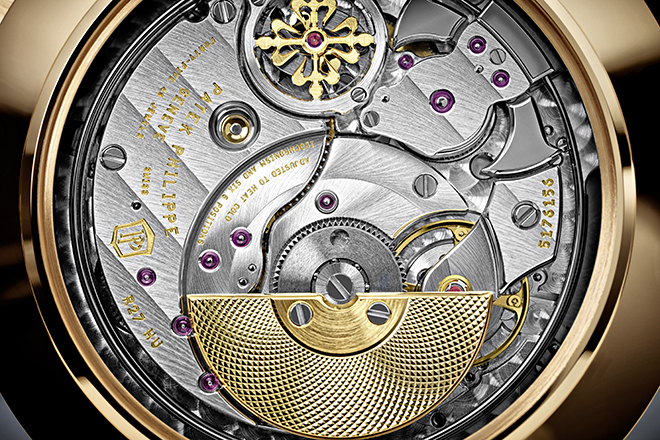
At the mention of Patek Philippe, Nautilus (or Calatrava) invariably falls off the tongue. No shock there, it is even among the top suggested Google search terms that follow the brand name. However, there is much more to the Maison’s watchmaking history than one ubiquitous timepiece. In Patek Philippe’s 179-year history of watchmaking, it has been a patron to scores of talented artisans, each have enriched the Geneva manufacture’s archives with all manner of decorated clocks and watches.
Storytelling Through Patek Philippe’s 2018 Rare Handcrafts Exhibition

Each year, Patek Philippe produces around 40 one-of-a-kind works of rare handicrafts that do not appear in stores or catalogue of current collections. The intricate production process is then recorded and preserved in the Patek Philippe Museum – the only thing older than the museum are the techniques themselves, having existed since Geneva circa 1600s.
Historical records show that the Maison started artistic watchmaking with engravings that reflected themes of Polish history and culture, inspired by Antoni Norbert Patek and François Czapek – the original co-founders of the company. The company’s modern name is reflective of French horologist Adrien Philippe’s encounter with Antoni Patek after the dissolution of his former partnership with Czapek.
While the results of the initial pairing resulted in decorated pocket watches that signified a first of a successful union between artistic research and technical skill. The later relationship and thus aesthetic laid the foundation for a stream of clients, which then led to a steep in complicated handcrafts, such as enameling and the guilloché. Pocket watches were the most common type of watches found during that era, usually in an overly decorated style to indicate their value but more importantly, these techniques served as bulwarks to resist surface oxidation – a constant problem to unsophisticated material sciences of the era. However, Post-World War II climate saw a decline in artistically produced watches and to the point where it almost was completely wiped out in the 70s and 80s due mostly because of consumers’ disregard for artistic value.

As a brand deeply rooted in heritage and traditions, this year, Patek Philippe was proud to highlight its connection to the art of rare handcrafts in an exhibition in Geneva, casting light on the near terrible loss of watchmaking metiers d’art. The exhibition, staged in April 2018, showcased precious watches that were created by artisans whom the Genevan manufacturer continued to work with even at a time when handcrafted watches were out of style, as well as a wide range of new exceptional domes, table clocks, pocket watches and wristwatches paying tribute to the ancestral artistry skills. These treasures of great virtuosity are truly as the Greeks envisioned when they made Aesthetics one of the eight branches of philosophy, objects of life affirming sensation and perception.
As Patek Philippe celebrates the rare handcrafts before they continue their journey to private collections all over the world, here we list the handcraft techniques still employed by the Maison today:
Engraving and Enameling




Engraving is one of the oldest techniques in printmaking and watchmaking. With a carving motion, the engraving method creates refine lines that reflects beautifully with a subtle play of light upon a metal canvas. For watch designs, artworks are usually finalised on paper before being etched on the watch using a graving tool called burin, which comes in many shape and sizes to design the most intricate patterns and motifs.








Enamel timepieces, on the other hand, are created using silca sand which will be transformed into a clear substance, followed by applying on the object surface. Metal oxides are meticulously applied to produce colour for shading. The paste will be left to dry before being fired in an 800-degree celsius kiln to fuse the paste to the base. This technique is usually used to decorate watch dials or objects with bigger base surface. The Golden Ellipse is one of the oldest watches in the Patek Philippe collection that boast two of these rare handcrafts, engraving and enameling.
Wood Marquetry


Also known as wood mosaic, this technique is the precise art of applying small pieces of veneer (thin sheets of wood) to form decorative and intricate designs. Marquetry’s advent in the watchmaking world is a fairly recent one as compared to other handcrafting techniques. This is seen on the Alpine landscape for the Calatrava wristwatches. For such creations, artisans have to be deft and methodical to work on such an elaborate and highly tedious process. Depending on the intricacy of the design, each creation might take up to 130 wood types. Patek’s “Rope Alpinists” comprises of 262 pieces from 27 different species of wood in varying textures and colours.
Guilloché


Guilloché is a technique in which intricate and repetitive pattern is mechanically engraved using engine turning. There are various types of machines for different artistry expressions, but the two main types of lathes used by guillocheurs are the rose engine and the straight-line engine. As its name suggests, the latter cuts straight lines as seen on Clous de Paris while the rose engine offers a wider range of patterns, resulting in kaleidoscope-like designs with interlacing lines and curves. This technique is versatile as it can be used on cases, bracelets, dials to even the movements.
Editor’s Note: There’s been a recent meme going around social media and we wish to remind fans and readers that unlike some other “assets” – Your children can actually inherit a Patek Philippe. A Patek Philippe is made of precious materials and worked with an artisan’s hands, while we can never be sure it will increase in value, it will be valuable for sure.
The post Storytelling Through Patek Philippe’s 2018 Rare Handcrafts Exhibition appeared first on LUXUO.
